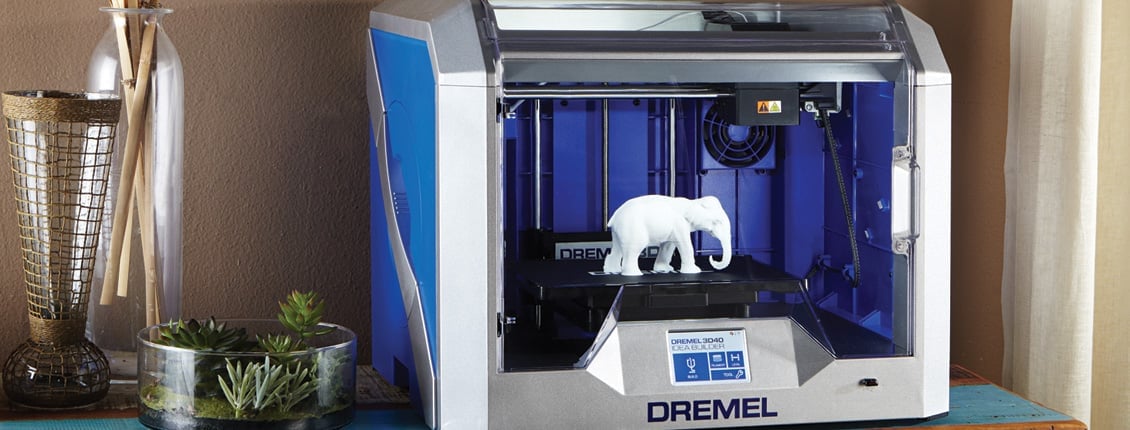
Question: What do jewelry, guitars, lawn mowers and pedestrian bridges have in common?
Answer: They’re all things that have been successfully created using the technology of 3D printing.
But exactly how does 3D printing work?
How Does 3D Printing Work?
A 3D printer adds layer upon layer of material until an object takes shape. That shape originates as a design on a computer connected to the printer. However, in place of traditional ink, desktop printers typically use thermoplastics that melt when heated, then solidify when deposited on the baseplate. A nozzle moves back and forth, as with an inkjet printer, emitting filament in as many passes as it takes. Each layer or component piece is adhesively fused in the printing process. (The process, which technically dates back to the mid-1980s, is also known as “fused filament fabrication.”)
The plastics come in different types, each of which have their advantages. Among the most commonly used, ABS (the material from which Legos are made) is highly durable and quite resistant to heat, while PLA is comprised of renewable resources like cornstarch and thus more environmentally friendly. They also come with drawbacks: ABS is non-biodegradable and gives rise to potentially irritating fumes; PLA can be brittle.
But more and more, the world of 3D printing goes beyond just plastic. More elaborate applications can include concrete, ceramics, metals or edible materials. A hip restaurant in London even serves an all-3D-printed menu on 3D-printed furniture.
And on a more serious note, the healthcare industry increasingly turns to 3D printing for uses ranging from pills to skin tissue. These carry the exciting potential for lowered costs.
Somehow, these products all exist on the same technological continuum. As you can imagine, the process makes a seemingly endless range of things possible. The only technical limits are those of the user’s imagination.
Consumer Availability of 3D Printing
Some financial limits remain, however. As of now, the cost of 3D printing isn’t cheap. But as the technology becomes more widespread and refined, the economics should shift more in favor of the consumer. In fact, it is already possible to buy budget 3D printers for under $300. At a price like this, customers can’t expect to become the architects of 26-foot-long bridges or 5-storey office buildings anytime soon—but they can still make some nifty little toys or trinkets.
“Fil” Your Shelves
If an actual printer seems too hefty an investment, then think about stocking filament for customers who already own one. ABS and PLA plastics of all colors come in convenient, budget-friendly spools ($20–$30) from brands like FoxSmart.
Whether you’re interested in carrying Dremel or FoxSmart SKUs, Petra is here to help. We hope you’re as excited as we are to see what form this technology takes in the very foreseeable future.
